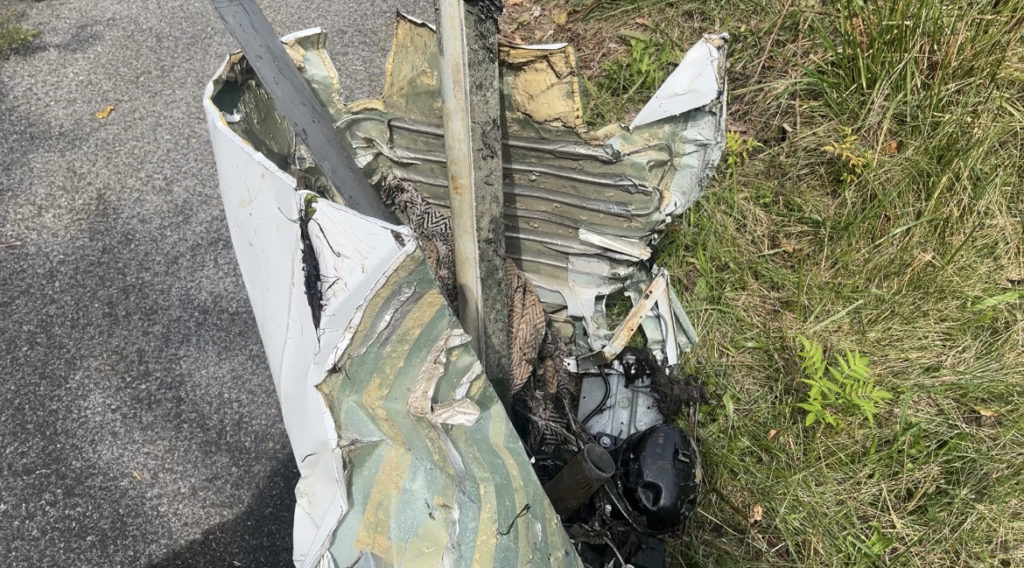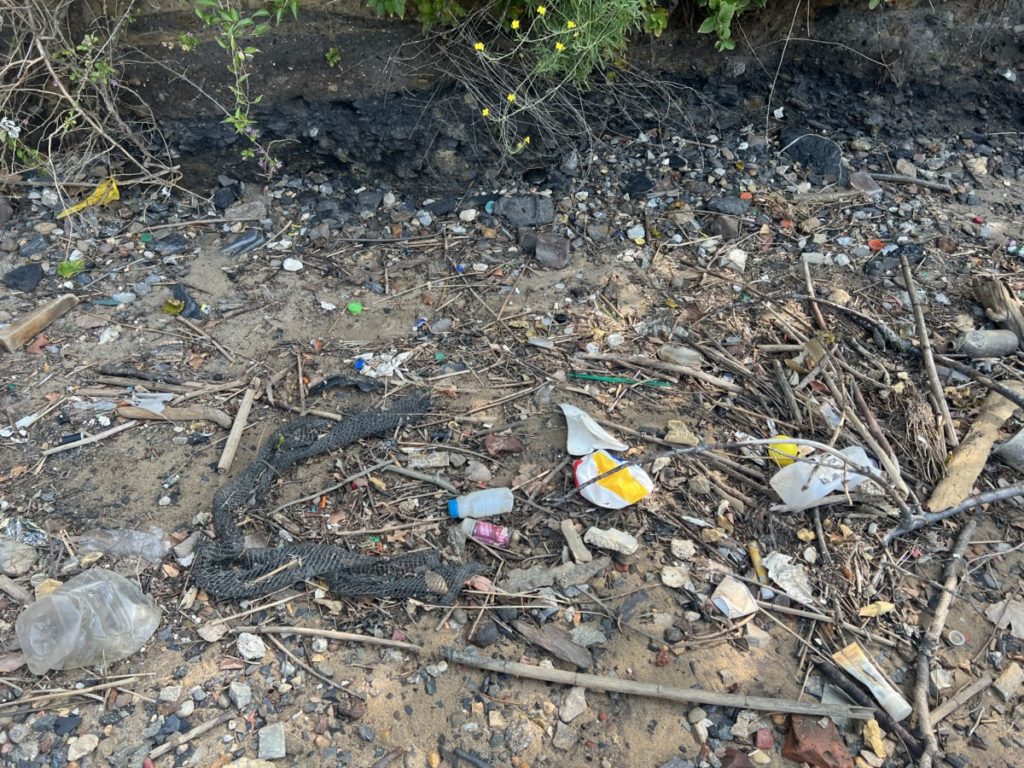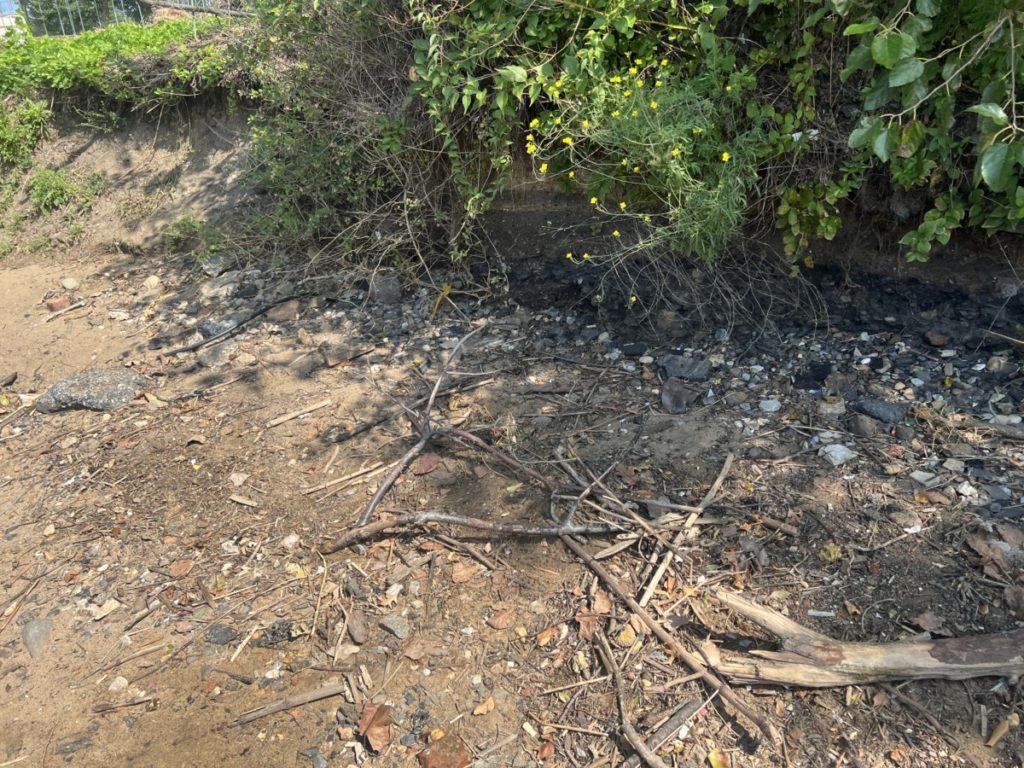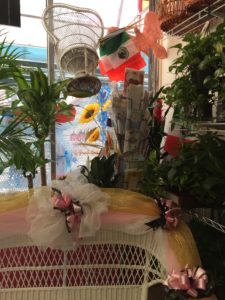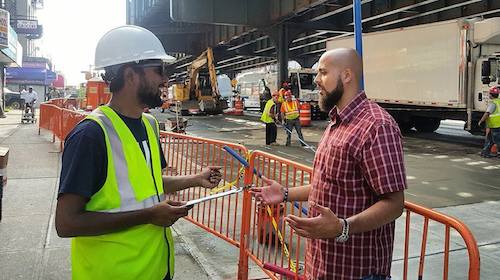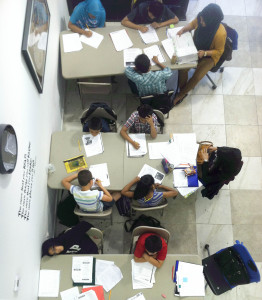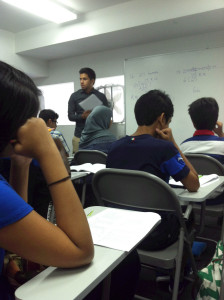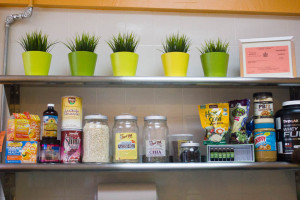The alarm rings and it is time for Pandit Vyaas Sukul to prepare to leave for the Bronx on an early Sunday morning. He showers, puts on his kurta (cotton tunic) and an upavita (sacred thread) and tends to his two-month-old baby. The Pandit has no time to eat breakfast. He gets in his car and drives over 45 minutes to his family’s 26-year-old temple.
When Sukul is not working as a finance executive in an office, he is the officiating priest at the family-run Hindu temple, Vishnu Mandir in Soundview. He took on the role in 2019, shortly after his father passed. This is a regular Sunday for Sukul, traveling almost 15 miles from Long Island to the Bronx to host the Sunday youth service for the two hours a week the temple is open to the public.
Along with his brother Pandit Krishna Sukul, who travels from Brooklyn, they both take off their shoes, take their place by the deities, and commence the rituals for the worshippers. Situated on Noble Avenue, the Vishnu Mandir serves the general neighborhood — community members, that at times include bishops and imams from neighboring centers of worship. The temple observes all the major festivals of the Hindu calendar.
The family, who are preparing to host Diwali, one of the biggest festivities in the Hindu calendar, are disappointed that the occasion is not recognized as a federal or state holiday. The festival is not mentioned in NYC’s Financial Information Services Agency (FISA) 2022 list of holidays and is also not listed as a Department of Education holiday.
As a matter of fact, the Hindu community remains to be one of the many religious communities in New York City and state without any recognized holidays, according to Bharati Kemraj, daughter of the late-priest Pandit Vishnu Sukul.
“There isn’t much for us. While there are many groups that are pushing (for) it, it has yet to happen and the Mayor Eric Adams did promise that in his first 100 days that he was going to change that,” she said. “It’s past 100 days and the community is still waiting.”
The festival this year is celebrated on Monday, October 24. People of various religions — including Hindus, Sikhs, Jains, and Buddhists — celebrate Diwali, also known as the festival of lights. According to a 2020 community survey conducted by the U.S. Census Bureau, there are almost 21,000 residents who identify as Asian Indians in the Bronx county, many of whom are likely to practice Hinduism, Sikhism, Jainism, or Buddhism.
In May 2021, Assemblywoman Jenifer Rajkumar (D-Queens), the first South Asian woman to be elected to a state office in New York, introduced a bill (A07062) to make Diwali a holiday for schools in the state. Kemraj hopes the bill advances past the Senate, who have the power for the bill to be written into the city. She adds that there is a short window of opportunity to do this, and so authoritative members, like the mayor, must review the bill and not wait until Diwali comes, working year round to ensure the community has a holiday.
“I think the leaders in our community need to recognize that the Hindu community is a very large community and we’re from all over. People could be from Africa and be a Hindu worshiper. New York City has to do a better job at talking about diversity and inclusion in 2022. All we get is alternate side parking for Diwali, but nothing is on the calendar,” Kemraj added.
Former mayor, Bill de Blasio, avoided answering whether Diwali would be recognized as a school holiday in October 2021, but that Eid and the Lunar New Year were. In the 2021-2022 school year, schools were closed for both the Lunar New Year and Eid while they were open for Diwali.
Continued efforts, like Rajkumar’s, are still in the works. In 2021, the city council issued a resolution requesting that the New York City Department of Education declare Diwali a holiday.
“Mayor Adams fully supports making Diwali a state and school holiday and has met with community leaders, including Assemblymember Rajkumar, to discuss strategies to ensure this happens,” a city hall spokesperson said via email.
“Diwali becoming a holiday is one of our legislative priorities for next year,” they added.
On October 20, Mayor Eric Adams, state assemblywoman Jenifer Rajkumar, and Department of Education chancellor David Banks announced at a morning conference, that if Rajkumar’s bill passes the legislature, Diwali will become a Department of Education holiday in the 2023 public school calendar. It will replace Anniversary Day, which is typically observed on the first Thursday in June.
The Department of Education told The Bronx Ink that “state regulations around the duration and the length of the school year create limitations to any additional school holidays to the school calendar.” Nonetheless, they added that they are providing teachers with a resource called “Learning About Diwali” that has model lessons for all grade levels K–12 as well as ideas for activities, books, and websites.
Most recently on various evenings, public officials attended Vishnu Mandir during the temple’s nine day Navratri festivities, which celebrates the divine feminine with rituals and offerings made to many goddesses. Among the crowd were Soundview native and Councilmember Amanda Farías (D-Bronx), along with District Leader Ramdat Singh of Riverdale (D-Bronx).
“I love Navrtatri. I think it’s one of the few times in any religion but particularly in Hinduism, where we get to celebrate feminine figures and it’s super empowering,” Farías said.
Farías took office in January of this year, serving as a council member for District 18 which includes Soundview.
“Whether it’s in a school, or in a temple, it’s my priority as the elected member to show up for them,” she said. “It is more important to make sure that statewide recognizes Diwali and I think there needs to be more of a conscious push from electors at all levels to get it to the full achievement of being recognized on a larger scale. But from the city perspective we’re working on it.”
The majority of members of the Vishnu Mandir live in Soundview and have ties to Guyana and the Hindu faith. “Everybody came here for a better life and a better home and I think that fight continues,” Kemraj said. Nearly 12 % of residents in Soundview were born in Guyana, with a high concentration living north of Bruckner Expressway, where the Vishnu Mandir is situated, according to census data .
On this Sunday in October, there were about 50 attendees at the special youth service, who ranged from ages nine to late 80s. Second and third generation immigrants lead the ceremonies. Sunday morning within the Hindu religion is an auspicious time, a staple day of worship — everybody either flocks to temples to pray or prays by their own altars at home.
The Sukul family expects almost 80 attendees for their Diwali weekend celebrations, taking place on Oct. 23 and Oct. 24. “Almost every year, I have to skip work for Diwali. But when I get a job, I always tell them that I’m a priest, so they know what to expect,” said Sukul.
Small steps are being taken to increase awareness of the celebration. City Hall will hold a Diwali event on Nov. 1 that is also co-hosted by elected officials from various parts of the city, including Farías.
“In a time where there’s so much diversity, I think our community gets a little lost because we want to share our culture, and it’s really sad to see that people are still closed minded or they just don’t know enough to be able to acknowledge what we do and how we do it. So the fight still continues,” Kemraj said.







